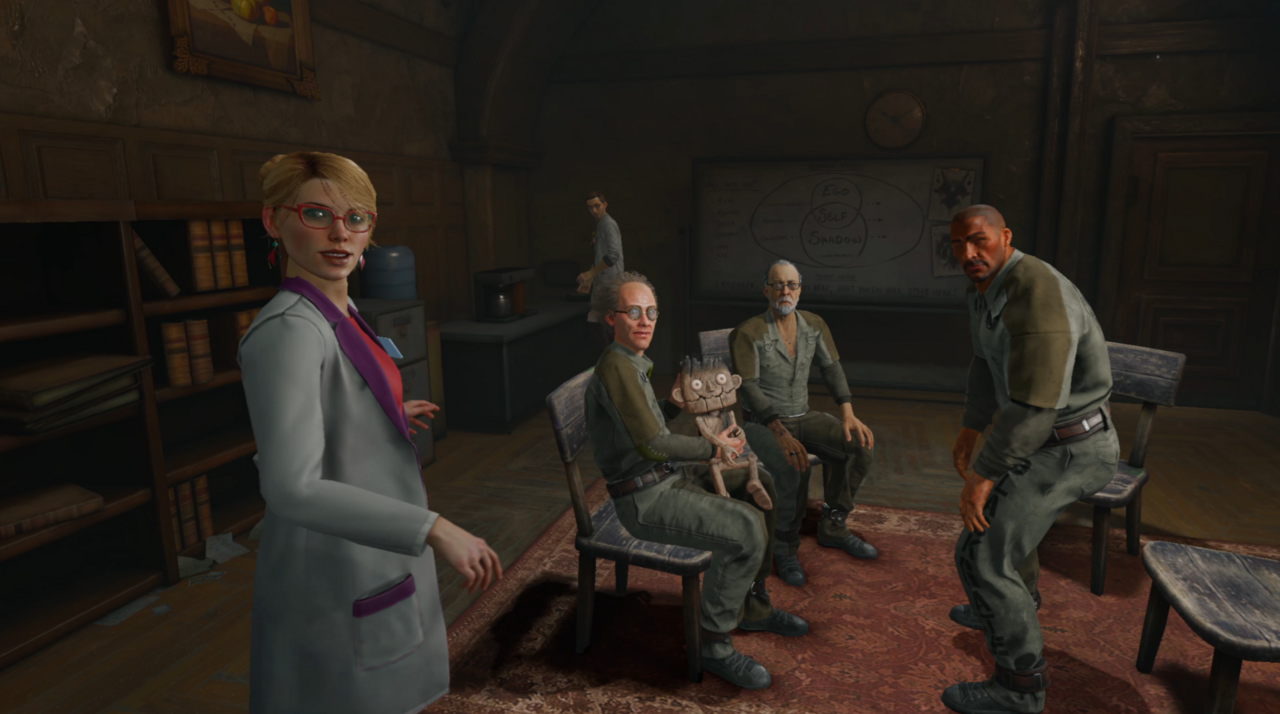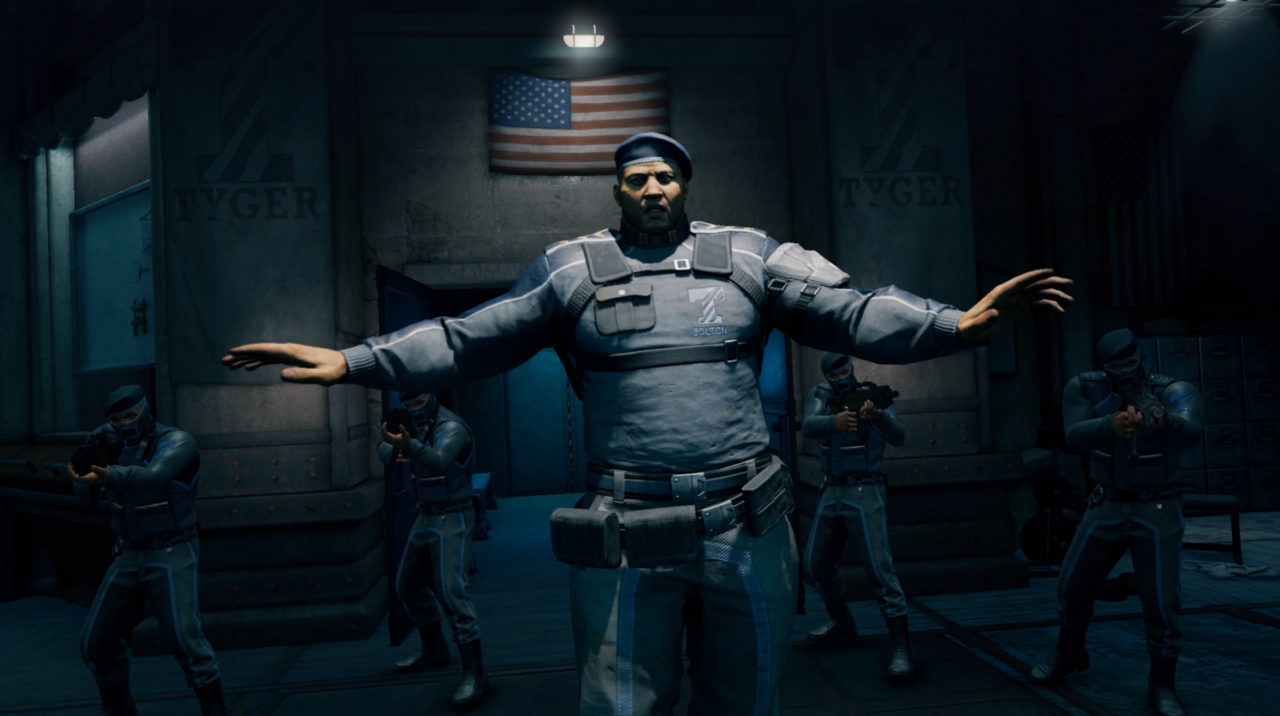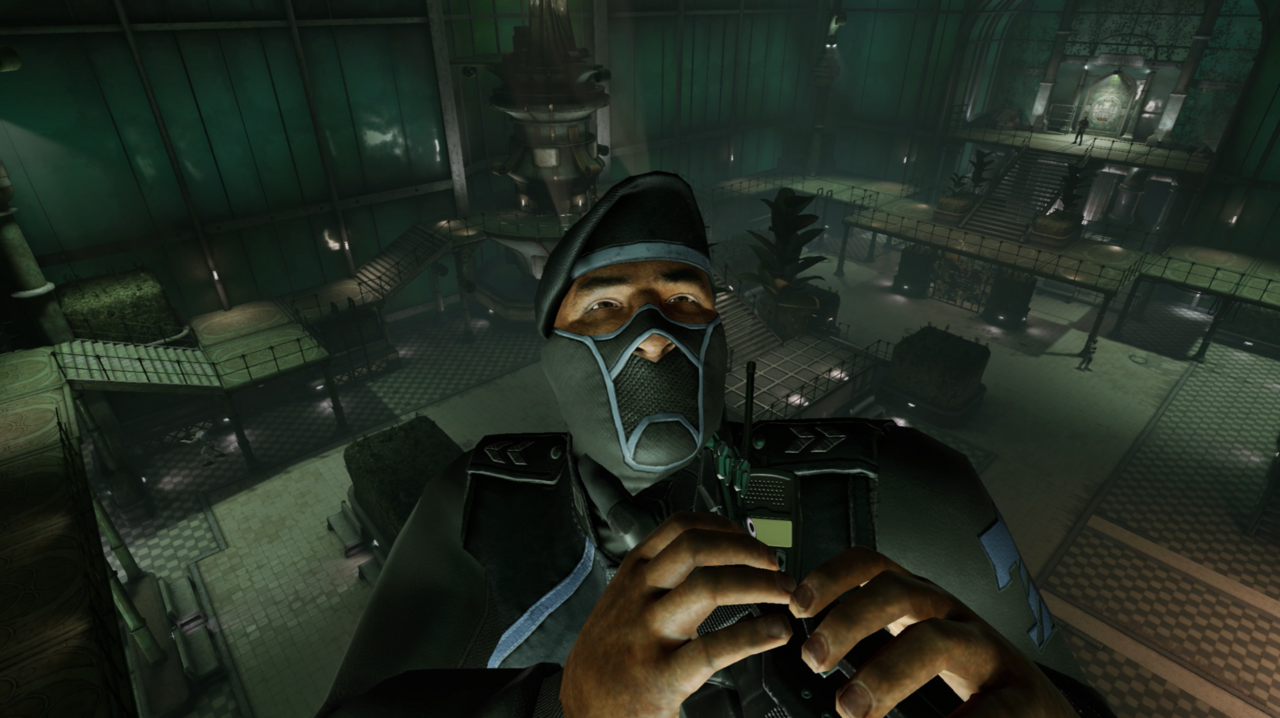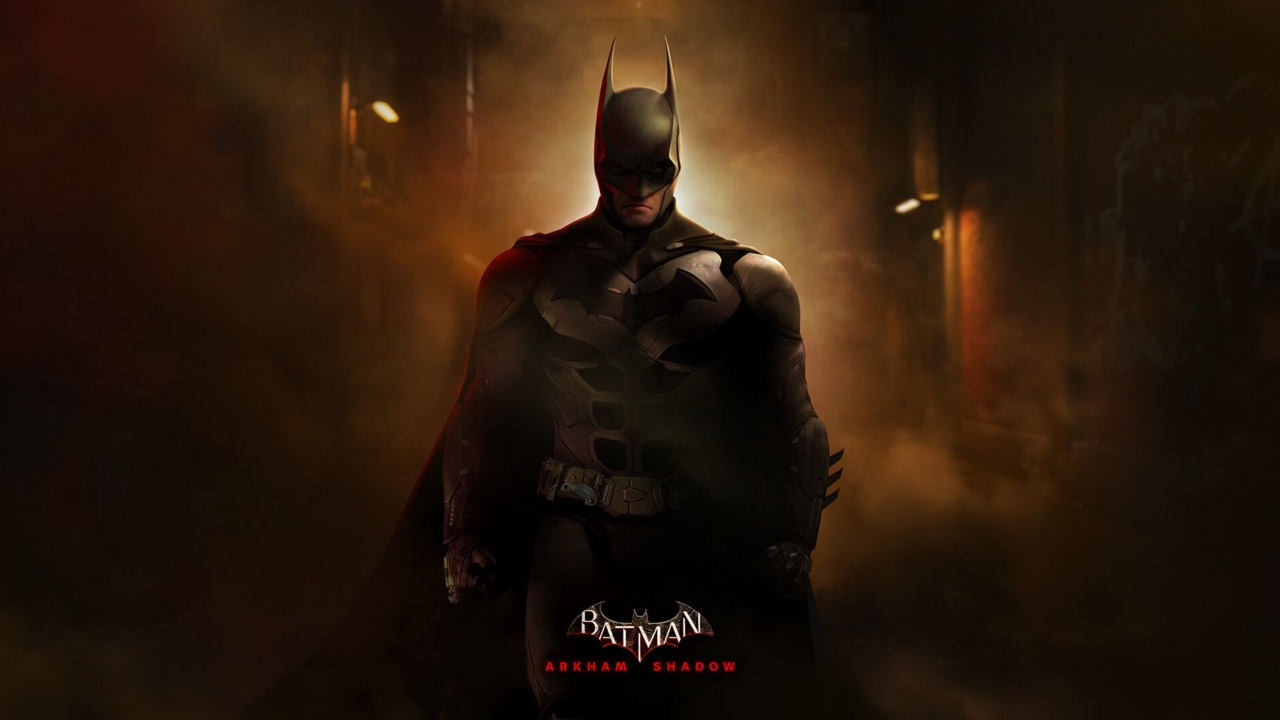It’s hard to believe it’s been nearly a decade since the last mainline Batman Arkham game. Since then, we’ve seen several Arkham-adjacent projects come out, only to feel hamstrung or otherwise lacking. 2016’s Batman Arkham VR was a neat tech demo, but it encompassed only the series’ investigative elements. Both traditional Arkham studios, Rocksteady and WB Montreal, launched Batman-esque co-op games in recent years, but each struggled for several, sometimes similar reasons. Batman: Arkham Shadow stops the tailspin by authentically recapturing the essence of the Arkham series in ways other recent Batmanverse games disappointingly and intentionally avoided, making this the best Batman game since Arkham Knight, even if it doesn’t soar to the same heights as the series’ finest moments.
Batman: Arkham Shadow is a VR-only, direct sequel to Arkham Origins, taking place roughly a year later. That means this version of Batman–once again played by Roger Craig Smith doing a solid Kevin Conroy impression–is still relatively untested and ornery. He’s learning how to become the unflappable Batman we typically know him to be, so his temper can still get the best of him, and his uncanny ability to stay 10 steps ahead of his enemies isn’t guaranteed. Played in first-person, you’ll explore some enclosed sections of Gotham before ultimately landing in Blackgate Prison for the bulk of the game, giving this game a structure very much like the metroidvania-style design of 2009’s Arkham Asylum.
The Dark Knight’s mission is to identify and stop The Rat King–a new enemy in the Batman mythology–who’s thought to be hiding out in the prison just days before his catastrophic strike on Gotham unfolds. This sees Shadow’s story unfold over the course of an in-game week rather than the usual overnight structure of Arkham plots, and sometimes, it shows.
You’ll spend about half of the game out of costume and disguised as an inmate, Irving “Matches” Malone, allowing you entry into the high-security prison. Some of the game’s pacing in these sections doesn’t match what the Arkham games would normally offer–a throwaway detail involves spending money at the commissary to buy cosmetics with which you decorate your prison cell, but the options are both too few in number and unappealing. But even cool options here would’ve felt like the wrong layer to add to the Arkhamverse.
Batman doesn’t hang out, regardless of whether he’s dressed like an inmate or a superhero, so you’ll only really see his cell when it’s time to end the day. It’s not merely dialogue when you’re out of the cowl, though. There are still some enjoyable moments when playing as Matches, like some missions that ask you to sneak around the complex or fight other inmates without Batman’s usual repertoire, but they pale in comparison to the standout time spent in Kevlar.
One issue I kept returning to, regardless of Bruce Wayne’s get-up, is a lack of notable villains. There are only a few boss battles in the game, and most don’t involve Batman’s major rogues. When I played Arkham Origins, it was hard to shake the sense that I was squaring off with Batman’s B- and C-tier villains, for the most part. Firefly doesn’t hold a candle (no pun intended) to Poison Ivy, Two-Face, or Joker.
Arkham Shadow dials down the theatrics to an even lower level, swapping out someone like Origins’ Deathstroke for Lock-Up, a hulking Tyger guard who struggles to feel like anything more than a souped-up common enemy. To its credit, Shadow also takes advantage of its story being early in Batman’s career, letting you spend a lot of time around characters whose arcs fans know all too well, but you’ll see them before they’ve fallen down their respective pits of darkness. That’s standard prequel fare, but I enjoy it when it’s done well in the Batman world, as it is here–in several cases, but one especially.
On its story merits, Arkham Shadow can’t match Rocksteady’s best work. I’ve long believed Arkham City to be one of the greatest Batman stories regardless of medium, so the bar is extremely high, and though Arkham Shadow falls short of it, that’s not to say it’s a bad story. It gets better in the final act and has some great character moments. It authentically captures the mood of the other games, owed to its way of adopting both identical art direction and a similar-sounding original score. Arkham Shadow wants you to recall fondly your time with the earlier games in the series, and it wants you to believe it deserves to exist in that same place in your mind. And, despite a story that doesn’t get there, most everything else does.
Arkham Shadow is exclusive not just to virtual reality as a platform, but to the Meta Quest 3 (and its cheaper, slightly less-powerful sibling, the Meta Quest 3S). But in all the ways fans of the series would find important, it plays like a core addition to the lauded series. Unlike Arkham VR, Arkham Shadow ports over all three phases of the series’ gameplay loop: combat, stealth, and detective elements.
The combat is the surest sign that Shadow really works as a proper Batman game. For a Batman fan skeptical of VR or even someone who has simply never tried it, it would make for a jaw-dropping demonstration. It offers the same blend of fluidity and complexity of past games, highlighted by its signature counter mechanics being seamlessly transposed into VR, giving you the tools to take out a dozen baddies without so much as a scratch on your exposed chin.

Rather than press a face button to activate the counter when the on-screen prompt appears, Shadow shows the same lightning bolt-like symbol on the left or right side of your interface, and to perform the move, you simply throw your arm out to the same side. Just like in other Arkham games, this allows you to pummel one guy, but then easily interrupt your own offense in favor of a counter that continues your combo meter, unlocking things like finishing moves and activating Batman’s shock gloves. Importantly, the camera automatically shifts to have you face countered foes, though you can always turn on your own accord, too. It all feels just as fluid as the existing games in the series and earns the “freeflow” moniker in its own right.
The same enemies you may know from the series return here, and each one adds a layer of combat complexity. A bigger, more brutish Tyger guard must be stunned with your cape–done in VR by making a hook motion with your arm without holding the triggers, which would instead translate to a fist/punch. Enemies with stun batons are scaled up and over using the right stick, then kicked in the back by raising and throwing down both of your arms. Those with knives need to be dodged by ducking before you can counter their attacks with your own, and riot-shielders demand a combination of cape-stunning and climbing before an overhead forearm smash. To Arkham veterans, these will sound familiar, as they’re exactly what you’d do in the other games, and in a way I can’t technically explain, the physics of it all feel exactly as I remember it to feel. Every combat encounter is exciting and approachable enough to allow for mastery of its systems, which naturally sends a tidal wave of dopamine coursing through you. In a manner I’ve never experienced before, I am Batman.
This is just as uncannily true when moving through the world in all the ways you can as the hero. When gliding down from gargoyles, or bat-clawing over a ledge, you move at the same speed, and with seemingly the same animations, you’d be used to from other Arkham games. Here, you’ll physically hold out both arms to your sides to perform a glide, rather than hold down a single button, but how it looks and feels is otherwise identical to before. A glide kick from 40 feet away includes the same look and feel that series experts will be used to. Even looking down at my legs when I was simply walking, Batman seems to have the same gait he always had in the series. I didn’t expect this degree of duplication and probably would’ve settled for something quite like what I knew before. But this isn’t just quite like it. It is it. Having played each of the Arkham games several times over, Arkham Shadow feels like coming home after some time spent away. It’s familiar and faithful in all the right ways.
While combat in VR includes about as many button presses as it does on a controller, performing stealth functions is a more physical, multi-step process. From atop a perch in an older Arkham game, you’d press one button to pounce on an enemy below and string them up like a warning sign to others during “predator” sections of the game. In VR, that one ability is performed in several smaller motions: First, you hold down the right stick to hang from the gargoyle, then you lunge at a nearby enemy with both arms, at which point you’ll lift him up. You tie them automatically, but to complete the move, you then toss them away, like The Undertaker throwing Mankind off the cell in 1998.
If it sounds complicated, it’s really not. The on-screen prompts help it become second nature before long, and no move demands unforgiving precision. Like most VR games, it accepts something close enough to what it’s asking for. Crouching behind enemies or popping out of grates beneath them to silently choke them out is similarly tactile, demanding you lunge at them by thrusting your arms forward, then throwing your arms side to side a few times to simulate a chokehold until they pass out.

Batman’s tool belt has been cleverly rebuilt for VR, too. The decoder that would unlock doors in past games is now a motion-based puzzle where you unholster the device, scan the lock, then search a small radar-like map in your hand to pinpoint the sweet spot that grants the unlock password. Other classic tools return, too, like the bat-claw that can rip grates off of hard-to-reach air ducts, or the explosive launcher that can be used to break down walls or even stun enemies mid-fistfight.
Naturally, Shadow also includes detective vision, which you activate by moving either controller to the side of your head and clicking a trigger. It’s a simple on/off switch that immediately recolors the world around you in the same light blue filter, in which notable objects such as quest items and tons of optional puzzles stick out in orange. The detective gameplay in this series has never been very complex–it’s not Obra Dinn; you mostly just walk around interacting with the highlighted items so Batman can make his deductions automatically.
That’s true here too, but like before, I find even this simplistic take on detective work functions well as a reminder that Batman isn’t just one part MMA fighter and one part ninja; he’s also a gumshoe. Whereas the previous attempt to bring Batman Arkham to VR captured only this basic gameplay loop that usually doesn’t survive such a spotlight, in Shadow, it’s one relatively minor but still important piece to delivering a well-rounded, authentic Arkham experience.
Given the game’s metroidvanian world design, you can spend a lot of time off the main path to instead smash rat statues, destroy propaganda radios, and collect audio logs, among other puzzle types. Like Riddler Challenges before them, these puzzles are usually just tricky enough to reel you away from the objective for a minute or two, though plenty can’t be completed until you unlock the right tools later in the story. Even if this is your first Arkham game, that aspect is well-telegraphed when it needs to be, like when you clearly have no way of reaching a vent far above you until you get the bat-clow. I always enjoyed these optional puzzles, evidenced by the fact that I could hardly ignore any one of them when I’d encountered it unless I wasn’t equipped to beat it yet. To reach 100% game completion, you’ll need to wipe the prison of these puzzles, as well as complete the game’s enjoyable combat and stealth challenges, which unfold in arenas outside of the campaign–again representing another staple of the series.
With all of these tools at your disposal and all of the gameplay tentpoles intact, Shadow also thankfully offers a lengthy list of movement and accessibility options so players can find their best play style. Three core movement styles make up the base options, but you can customize each of them further so that if you might like an immersive turning method, you can have it, even if you also prefer that with a heavily vignetted point-of-view, which is used in some VR games to reduce nausea.
A few recent VR games left me nauseated, which confused me since I haven’t historically had to deal with that. Thankfully, Arkham Shadow never did. I played the game in full on the middle-ground option between something for beginners (or those most nausea-prone) and those who want the most immersive VR experience. The game does seem to eat into my battery a lot, as I beat it in five roughly two-hour sessions, stopping not due to nausea, but because my 5% battery warning would appear.

My foremost problem with Arkham Shadow is a lack of polish, which I consider different from the ubiquitous VR jank that pops up in Blackgate occasionally, like mangled forearms seen when opening some doors, or fingers that clip through held objects. The bugs I experienced were diverse in their nature, though thankfully not too numerous in their total instances. To name a few: Sometimes I’d get stuck behind an invisible wall, like when I’d deactivated an electrified barrier, but the game treated it like it still stood there. Other times, I’d load into an area and briefly witness a strange out-of-body experience where I watched from a great distance the entire game world laid into place before being teleported into the right spot. I’m not sure if it was a bug or just a lack of enemy barks and taunts, but in some fights, the bad guys I was scrapping with would too often repeat each other, too.
Individually, none of these are game-breaking, but collectively, the broad swath of smallish but nagging issues stood out. A VR game usually takes a hit to its visuals as a starting point when compared to what a PC or console game could offer, so when I’d experience bugs like these on top of a lower-definition take on the Arkhamverse, it became a reminder that, however authentic this new style of Arkham game is to the classics, it still felt off at times.
Admitting all that, I also know myself well enough as a critic by now to know that I don’t tend to care about bugs as much as many others. If the core experience is strong–if the highs are high enough–I tend to forgive some missing polish. That’s ultimately where I land with Batman: Arkham Shadow. The highs are high enough. Its story is a fun Batman romp that would work as a solid comic book arc, even if it can’t touch Rocksteady’s mainline saga. Moreover, it’s by capturing the full spectrum of Arkham’s still-exciting gameplay mechanics so effectively that Shadow becomes a must-play game for Batman fans, and a revealing measuring stick of how much virtual reality has advanced in just a few years. This isn’t the first Batman Arkham game made for VR, but it’s undoubtedly the first to feel like it belongs with the rest of the series.
